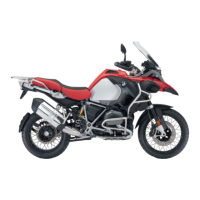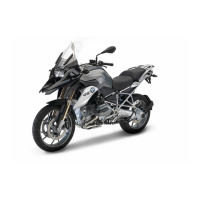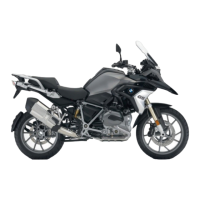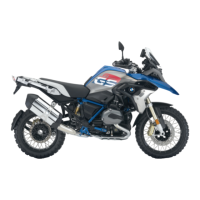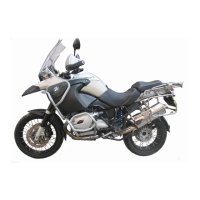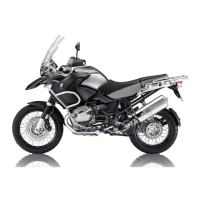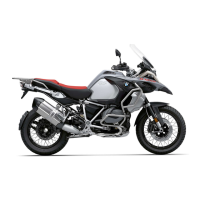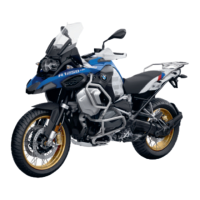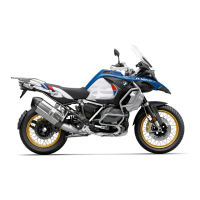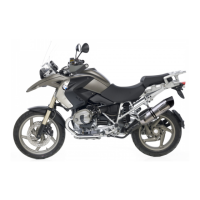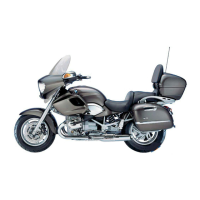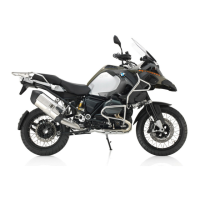
Do you have a question about the BMW R 1200GS Adventure 2015 and is the answer not in the manual?
| Displacement | 1170 cc |
|---|---|
| Bore x Stroke | 101 mm x 73 mm |
| Compression Ratio | 12.5:1 |
| Fuel System | Electronic fuel injection |
| Final Drive | Shaft drive |
| Tire, Front | 120/70 R19 |
| Tire, Rear | 170/60 R17 |
| Width | 980 mm |
| Height | 1, 450 mm |
| Wheelbase | 1, 510 mm |
| Weight, Wet | 260 kg |
| Engine Type | Air/liquid-cooled four stroke flat twin engine |
| Power | 125 hp (92 kW) at 7, 750 rpm |
| Torque | 125 Nm at 6, 500 rpm |
| Transmission | 6-speed |
| Frame | Two-section frame |
| Front Suspension | BMW Motorrad Telelever |
| Rear Suspension | BMW Motorrad Paralever |
| Front Brake | Dual disc brake, floating brake discs, diameter 305 mm, 4-piston calipers |
| Rear Brake | Single disc brake |
| Length | 2255 mm |
| Seat Height | 890 / 910 mm (Optional low seat: 860 / 880 mm) |
| Fuel Capacity | 30 liters |
Explains the function and meaning of various warning and indicator lights.
Details the information shown on the multifunction display and its navigation.
Provides a guide to understanding warning symbols shown in the display panel.
Explains the various warning lights and their associated meanings.
Describes the fuel reserve indicator and its function.
Information on the operation, features, and function of the ABS system.
Details on the ASC system's operation, control, and deactivation.
Details on brake operation, adjustment, and safety checks.
Essential safety advice for the rider, including equipment and riding practices.
Step-by-step instructions for starting the motorcycle's engine.
Details on fuel specifications, quantities, and the refueling procedure.
Explanation of the different riding modes and their effect on vehicle systems.
In-depth explanation of the integral ABS system, its function, and characteristics.
Explanation of the ASC system, how it works, and its design characteristics.
Instructions for checking and topping up the engine oil level.
Procedures for checking brake operation, pads, and fluid levels.
Procedure for jump-starting the motorcycle's battery safely.
Guidance on battery maintenance, charging, and handling.
Instructions for replacing fuses and understanding the fuse assignment.
Common problems and their potential causes and remedies for engine starting issues.
Technical data for front and rear brakes, including pad material and disc thickness.
Procedure for reporting safety defects to the relevant authorities and manufacturer.
Overview of key maintenance tasks and checks performed by authorized workshops.
A detailed schedule outlining required maintenance intervals based on mileage and time.
